

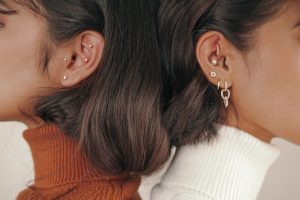
Have you ever noticed how ear piercings are getting more and more popular nowadays? Locally, of course we all know that the queen, Kathryn Bernardo loves her ear piercings (and we stan!), but there has been an international trend of piercing parties over the past few years as well. Fashion labels like Neiman Marcus and Alice + Olivia have hosted piercing party pop-ups before.
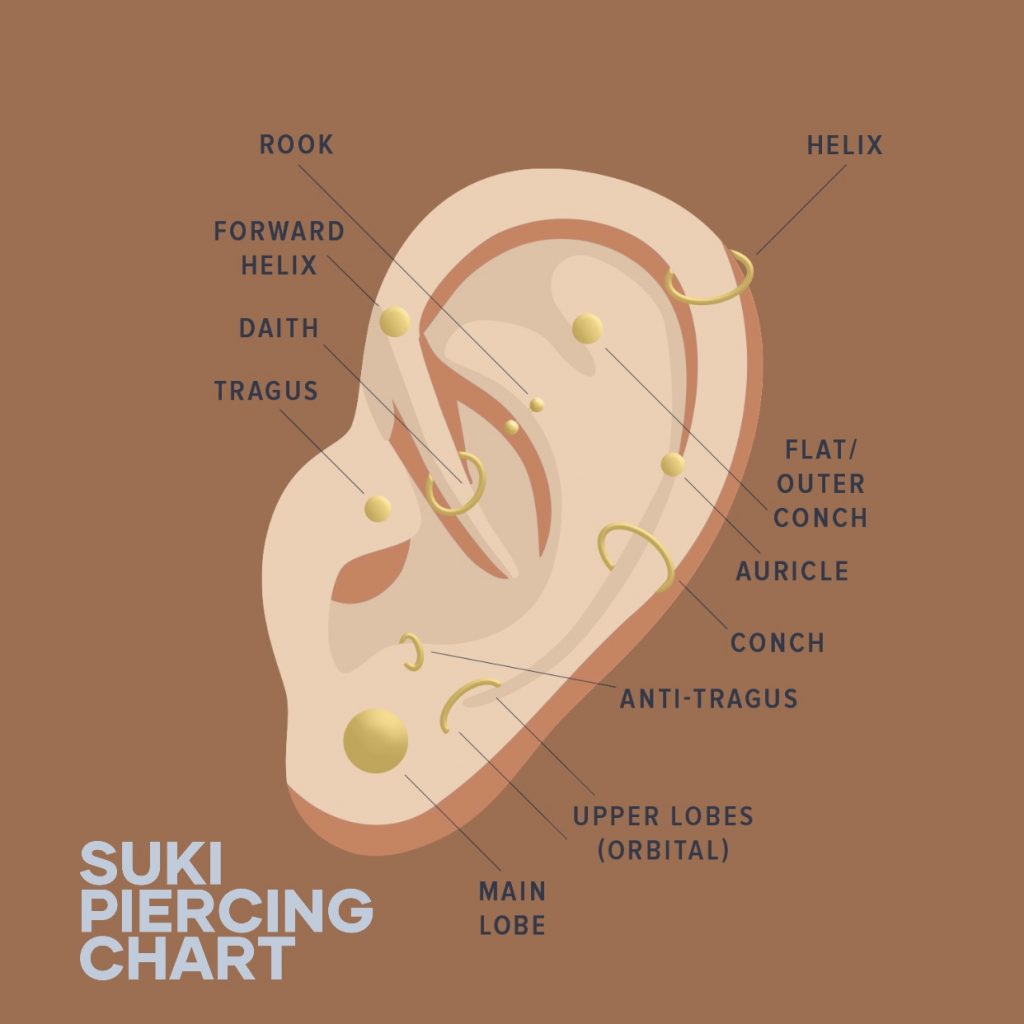
So the big question is… do you want to jump into the bandwagon, or are you still on the fence? Don’t fret — we got your back! Here’s a rundown of the different types of ear piercings plus our recommended size for each one, and we hope this can help you decide later, so read on!
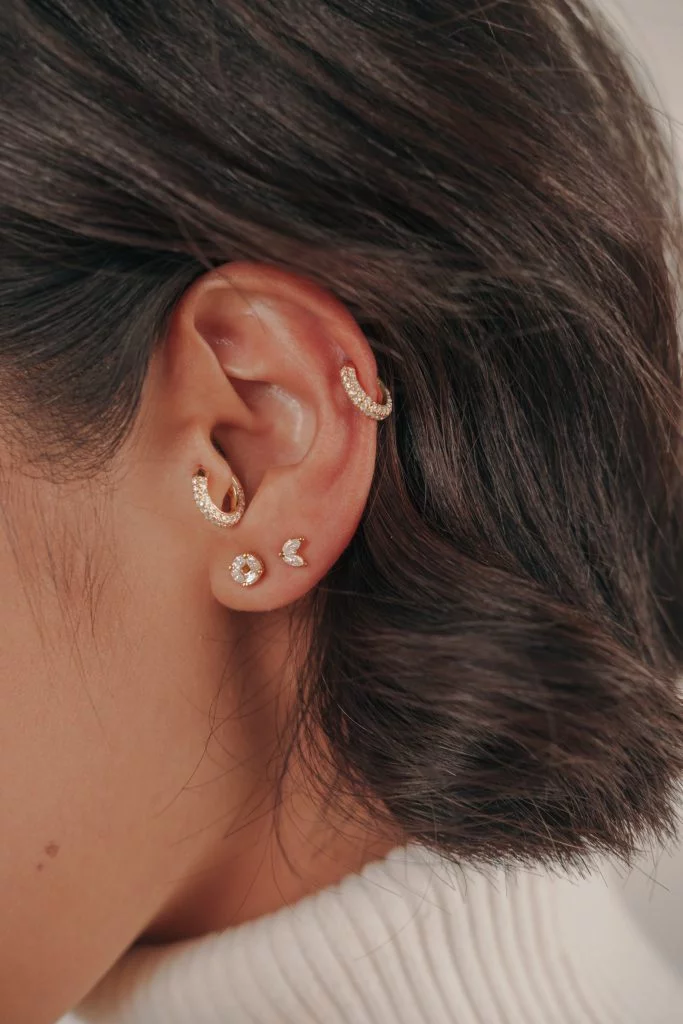
HELIX
This is one of the more popular types of piercings, and is usually located in the upper outer cartilage. Once you get more adventurous after getting some additional lobe piercings, this is a good area to move on next. Also, this takes a while to heal — give it six to nine months.
Suki’s recommended size: 5mm, 6mm
Suki’s recommended jewelry pieces: Tiny Wire Huggie, Tiny Bubble Huggie, Tiny Twist Huggie, Tiny Eternity Diamond Huggie, Puff Diamond Huggie
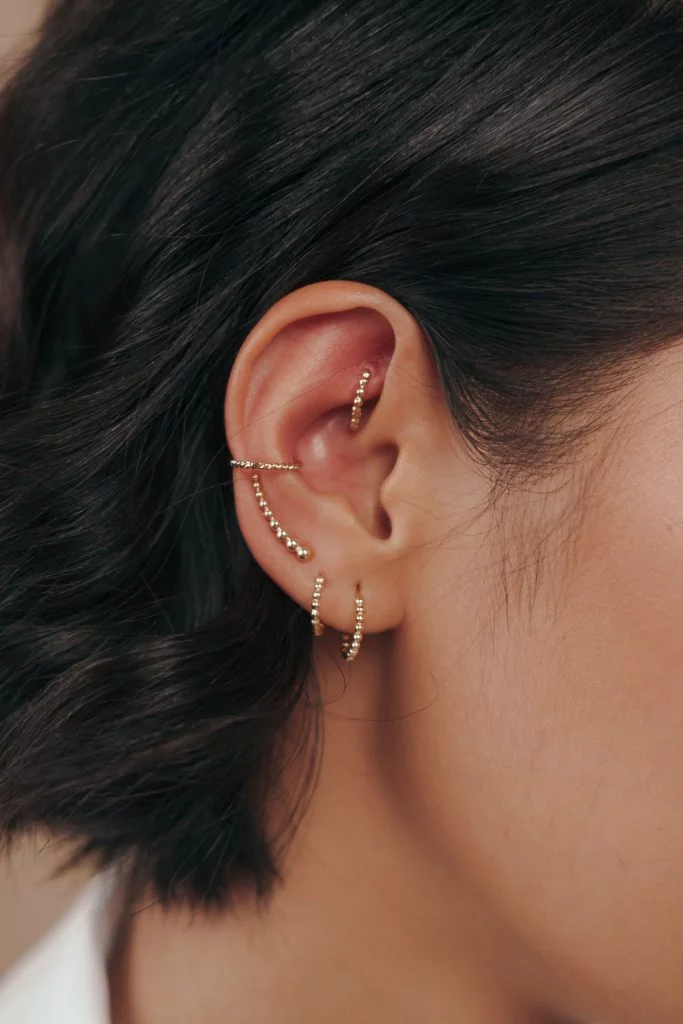
DAITH (pronounced “doth”)
So this one’s a bit tricky as it’s the innermost fold of your ear cartilage, and you would need to find a skilled piercer to do this. Some people describe the pain as a 6 out of 10, and same with helix piercing, it will take around six to nine months to heal.
Suki’s recommended size: 8mm, 10mm
Suki’s recommended jewelry pieces: Tiny Wire Huggie, Tiny Bubble Huggie, Tiny Twist Huggie, Tiny Eternity Diamond Huggie

CONCH
Your conch is the middle part of your cartilage, and has two placements, the inner and the outer conch. This is usually a pretty versatile piercing, as you can choose a stud or huggies for this part of your ear.
Suki’s recommended size: 10mm
Suki’s recommended jewelry pieces: Tiny Wire Huggie, Tiny Bubble Huggie, Tiny Twist Huggie, Tiny Eternity Diamond Huggie
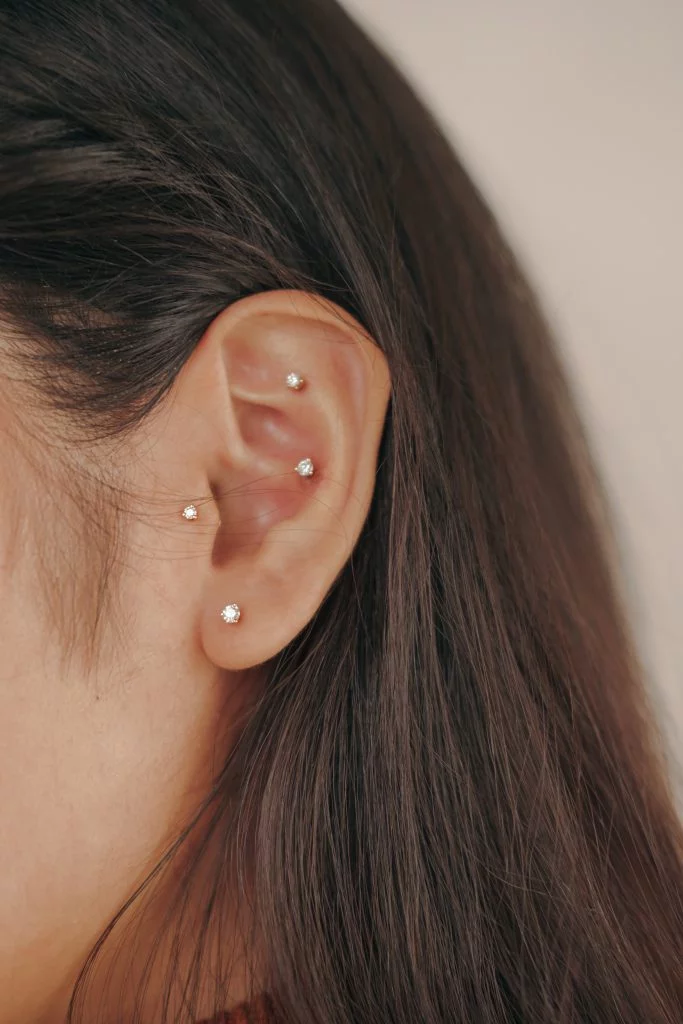
TRAGUS
Ever notice that small flap that covers your ear canal? Yup, that’s the tragus. You can choose a stud or hoops for this, but we recommend the threaded stud diamond prong or bezel. The piercing in this area takes a little longer to heal, and may take six months up to a year.




ROOK
For the more adventurous ones out there, you may be interested in the rook piercing. It’s the area above the daith, in your inner cartilage. Be cautious with this one though, as it may hurt a little more than the others! The healing time might take anywhere from 6 to 18 months.
Suki’s recommended jewelry pieces: Rook Barbell Pearl, Rook Barbell Diamond Prong, Rook Barbell Diamond Bezel, Rook Barbell Diamond Bezel and Pearl




STANDARD LOBES (Main and Upper Lobes)
This is where most people experiment first, on your main and upper lobes. Not only is this the easiest part to heal, but also, it’s the piercing that won’t be as painful.



ORBITAL
Orbital piercings aren’t that common, but if you want to stand out from the rest, you may want to look into this one. This is the type that connects two piercings with a ring instead of a barbell, to give that ‘floating’ or ‘orbiting’ illusion.
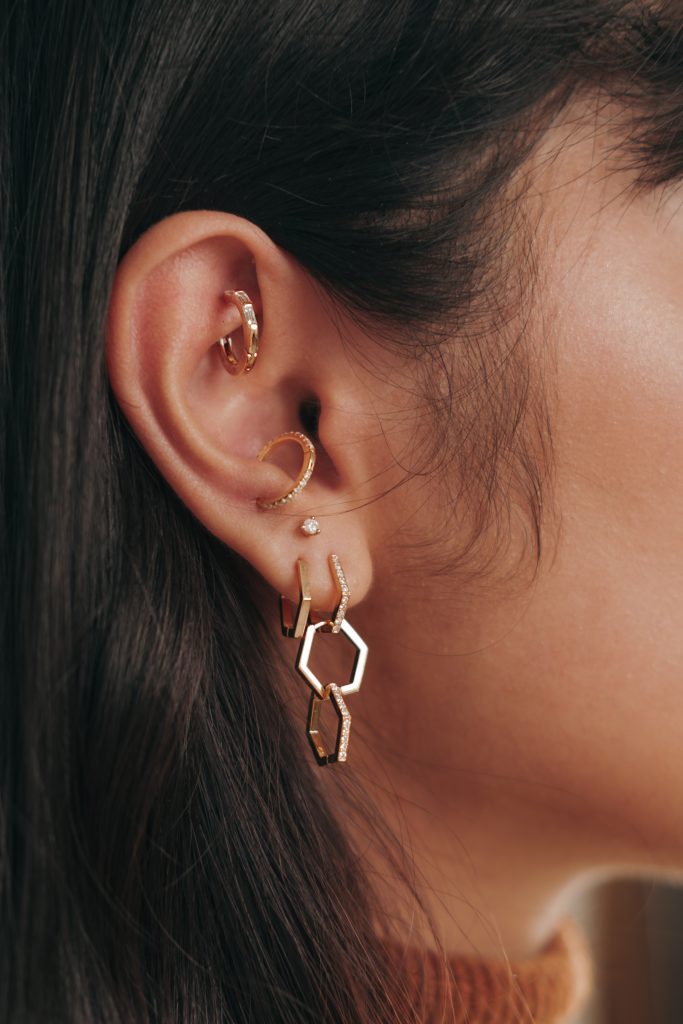
ANTI-TRAGUS
This is one of the more complex types of piercing, and is a type of cartilage piercing. It’s on the outside part of your tragus, and above your earlobe. The pain level for this piercing is a bit higher than the others, and a bit more expensive if you get it done as it’s more challenging to do.
Suki’s recommended size: 7mm, 8mm, 10mm
Suki’s recommended jewelry pieces: Tiny Wire Huggie, Tiny Bubble Huggie, Tiny Twist Huggie, Tiny Eternity Diamond Huggie
So do tell — which one’s your favorite piercing? And who’s going to schedule their next ear piercing soon? We know we are!
Xx, Suki